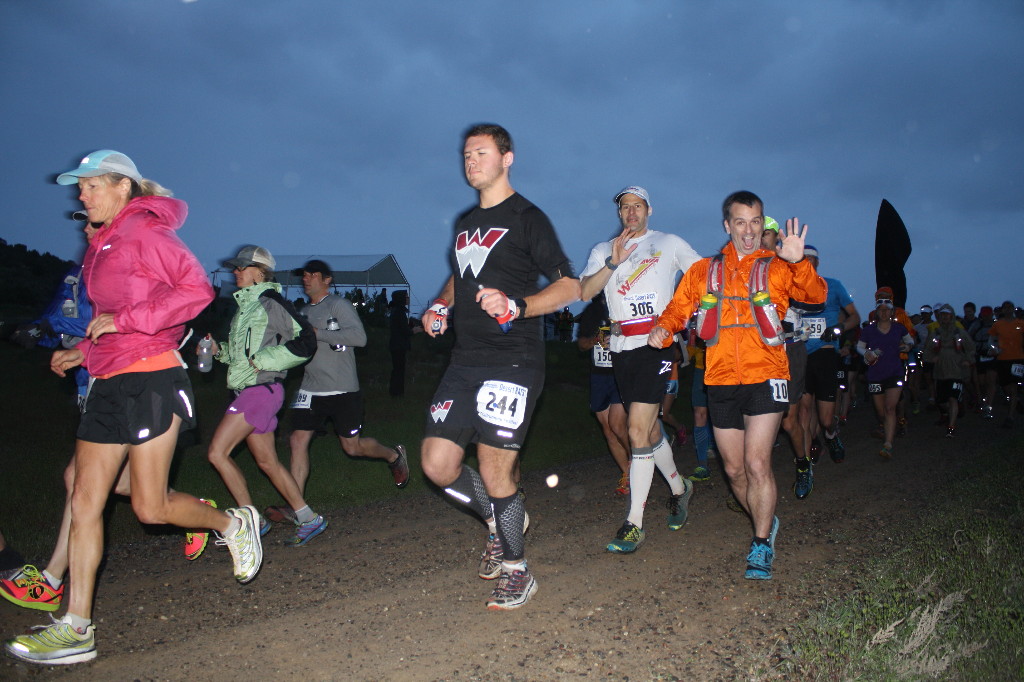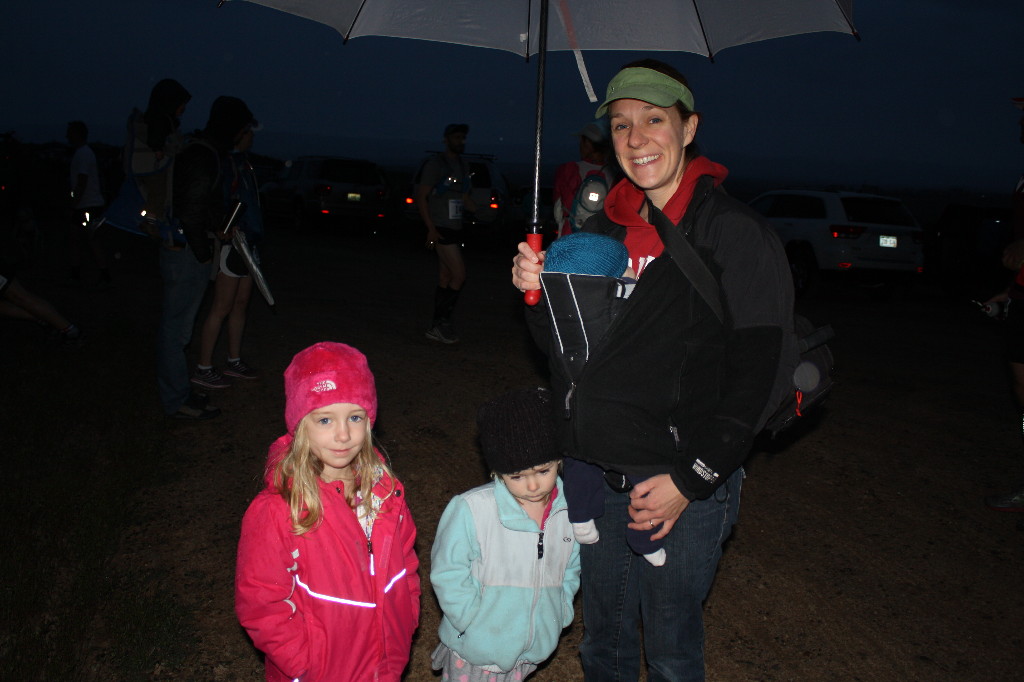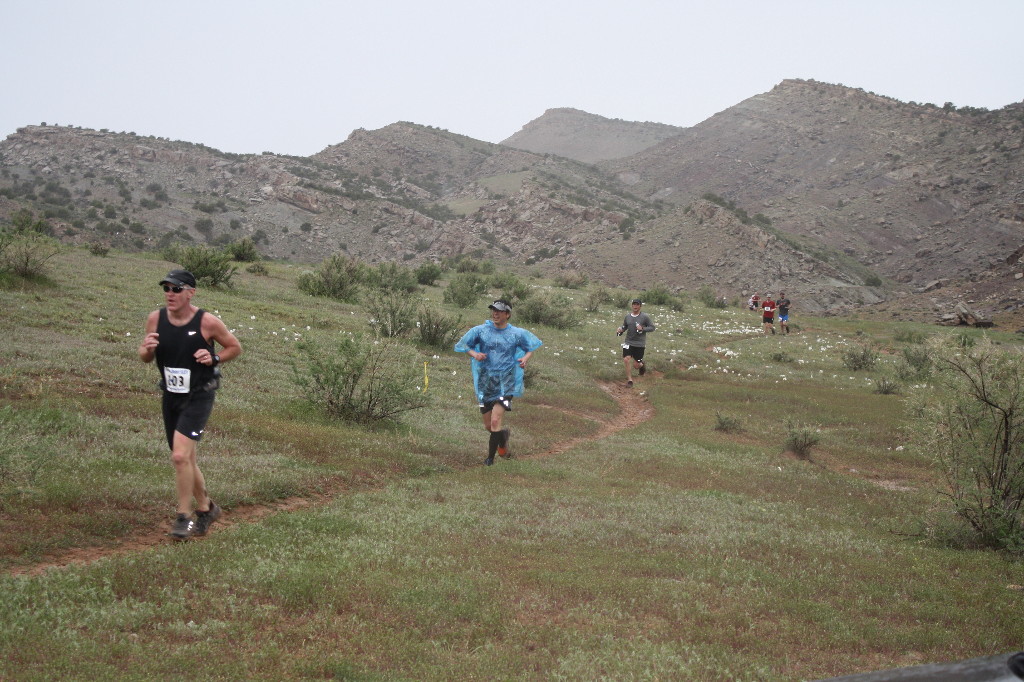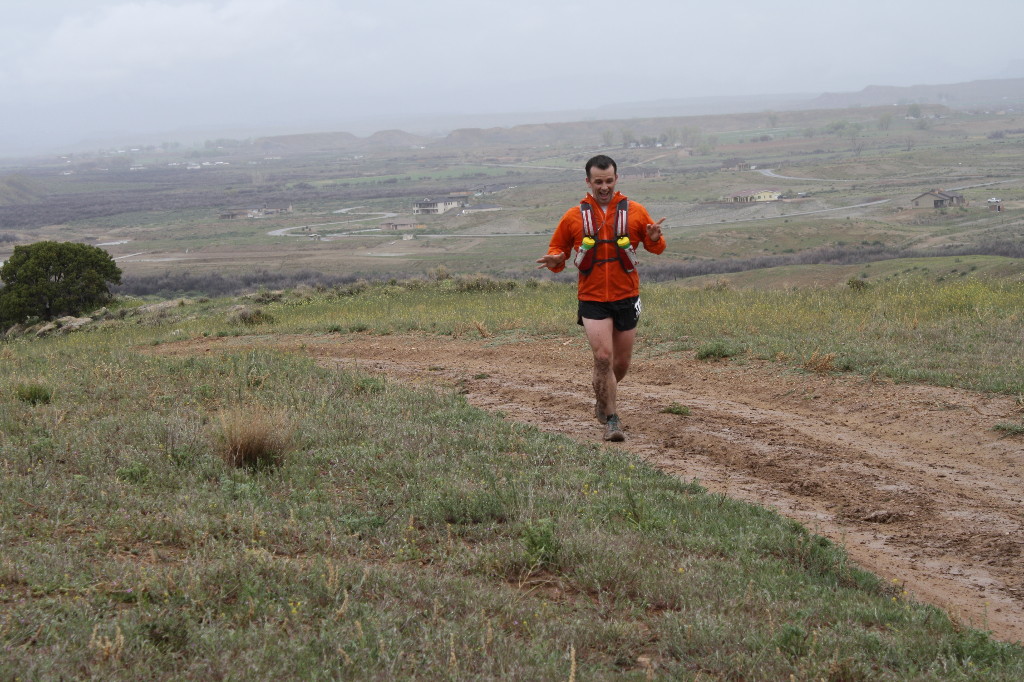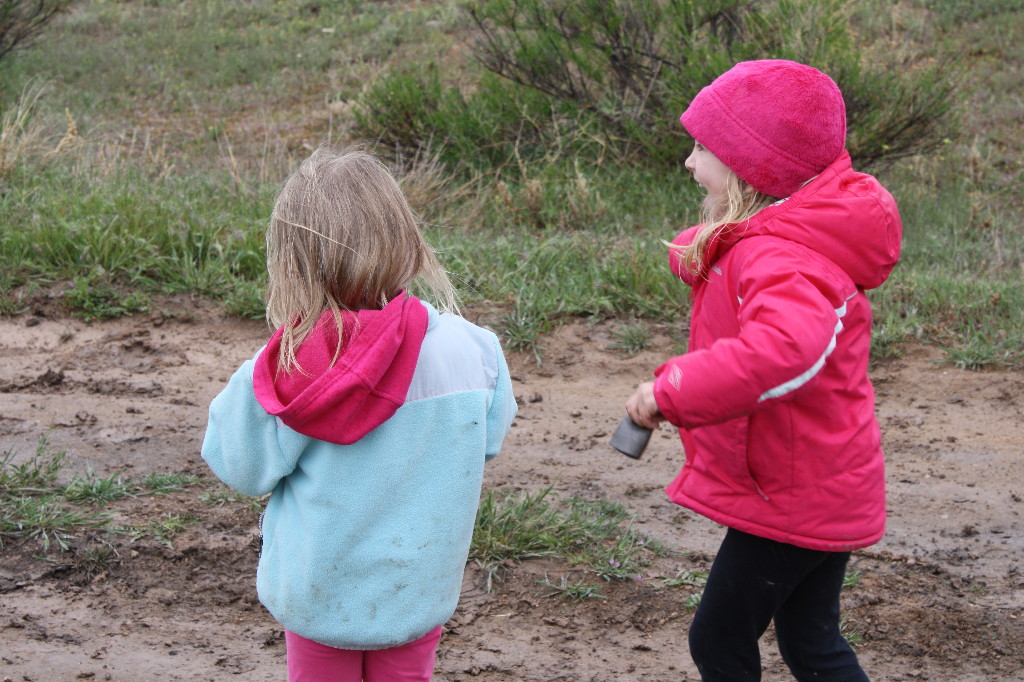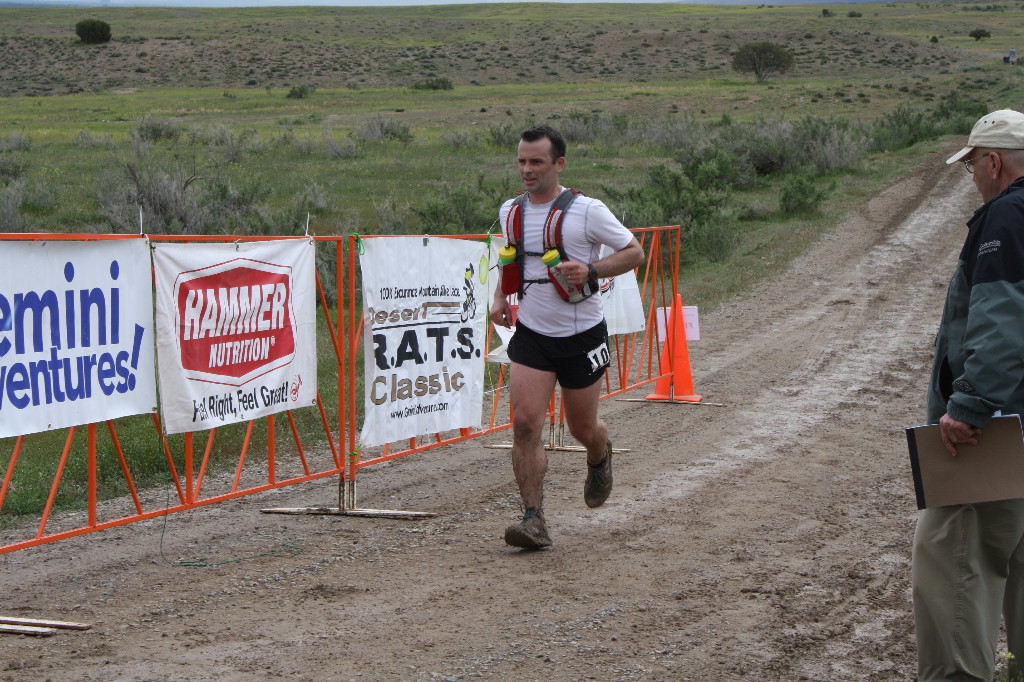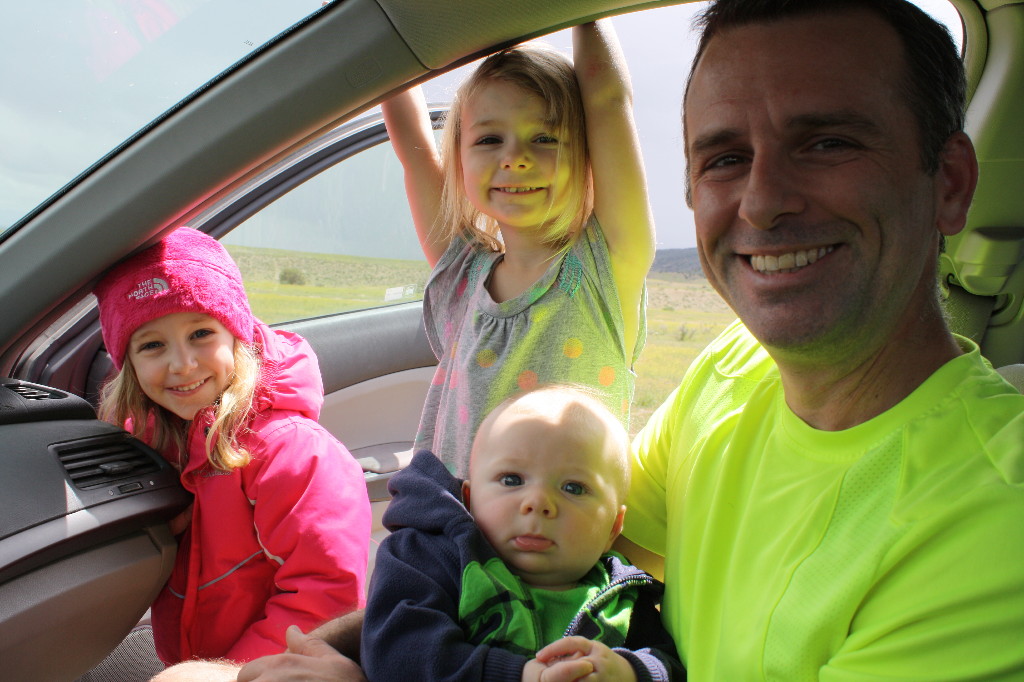About one month after the Elk Mountains Grand Traverse ski mountaineering race, it was time for my second race and first trail running ultramarathon of the season: the Fruita Trail Double Marathon. My still-healing foot was feeling good, not great, but I eagerly looked forward to the race anyway. In 2013 I’d run the single trail marathon on a gorgeous single-loop route near the Colorado-Utah border, winding its way through the canyons and benches above the Colorado River there. This time around I’d tackle that same 26.2-mile loop twice: once clockwise, once counterclockwise.
My foot injury and my leg fitness were still not 100%, so I planned to run conservatively. Even so, I knew it was a very runnable course, and believed that even though I planned to take it relatively easy and listen to my body, I had a reasonable chance of setting a personal record and for the first time break 10 hours on a 50+ mile trail ultra. It was the kind of belief in self that probably sounded like extreme overconfidence to anyone but me.
Clouds hung low over Colorado’s Western Slope on race morning. Then, as the pre-dawn race start approached, rain began to fall. First minute by minute—and then hour by hour—the rain steadily continued … and would for the first 4+ hours of the race. Slowly but surely, what began as glorious desert singletrack trail turned into a wet, goopy, sloppy, shoe-sucking desert mud. It was like running through a combination of pancake batter and Silly Putty.
Mile for mile, the 2014 edition of the race felt a full 50% harder than the 2013 edition. Everything was more tiring—making forward progress, keeping your balance in the slippery unsure footing, maintaining anything resembling a decent pace. Runners were caked in heavy mud, from their heavy mud-laden shoes to their legs and backs. It seemed that everyone took a dive, and I was no exception: one minute I was running along; the next I was flat down in the mud. At least the wet, squishy mud made for a soft landing.
Glancing at my watch, I could see that I was beginning to seriously slip off my target pace. What’s worse, as the miles ticked by I began to feel my foot more and more. It had started out feeling pretty good, but the strain of running through the mud was beginning to take its toll.
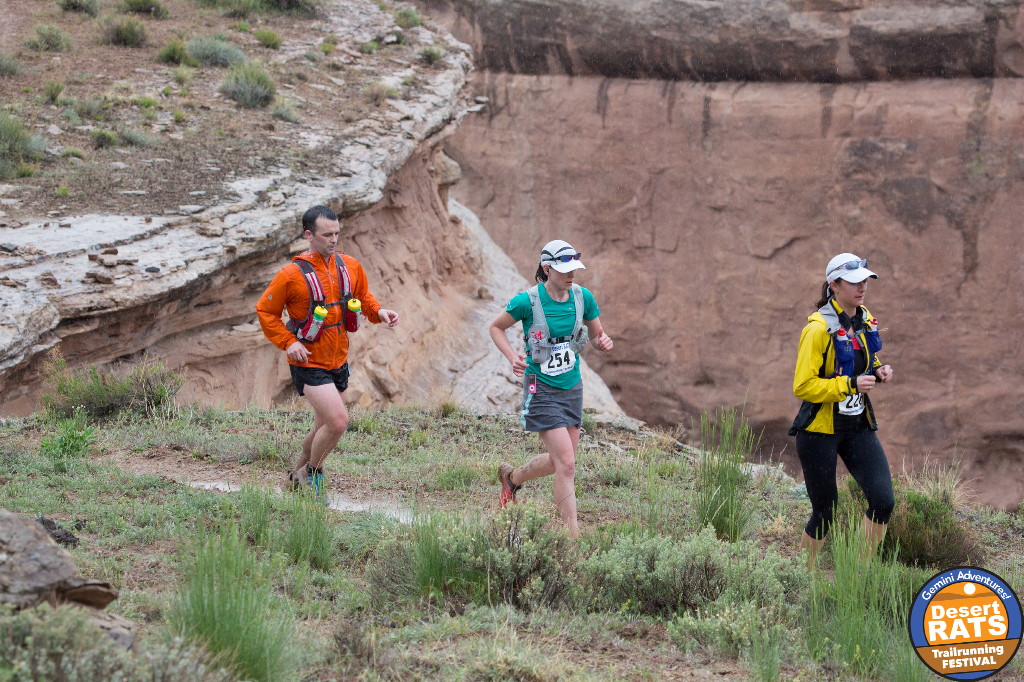
Running along the edge of a canyon rim above the Colorado River. Photo by Glen Delman. Used with permission.
By the time I saw the family at the aid station near mile 20, I was beginning to have serious second thoughts about the double marathon. Their bright smiles, enthusiastic cheering, high fives, and vigorous cowbell ringing gave me a temporary lift. But over the course of the next six miles, my foot felt worse and worse. I didn’t want to do further damage to the foot, jeopardizing the rest of the season or worse giving myself a chronic problem that would stay with me for the years ahead.
Perhaps even more so, the relentless mud proved an erosive force that zapped my will to continue. The thought of reaching the 26.2-mile halfway mark, turning around, and doing another lap through that exhaustive slop was too much to bear. Other runners were apparently in a similar boat—many of those registered for the double marathon opted to call it a day after the single marathon.
I crossed the marathon finish line in 5 hours 28 minutes flat, in 50th place out of 132 finishers. It was well behind the marathon split I’d have needed to do the double in under 10 hours. And though I was deliberately running more slowly to pace myself in theory for the double, the mud proved the far more influential factor—my 5:28 finish was more than an hour (25%!) slower than my marathon finish on the exact same route one year earlier.
I was now two races into the season, and neither had gone according to plan. Looking ahead, though, I had a solid two-month block of training time to prepare for my third race of the year in late June, which would be my toughest physical and mental test so far this year.
